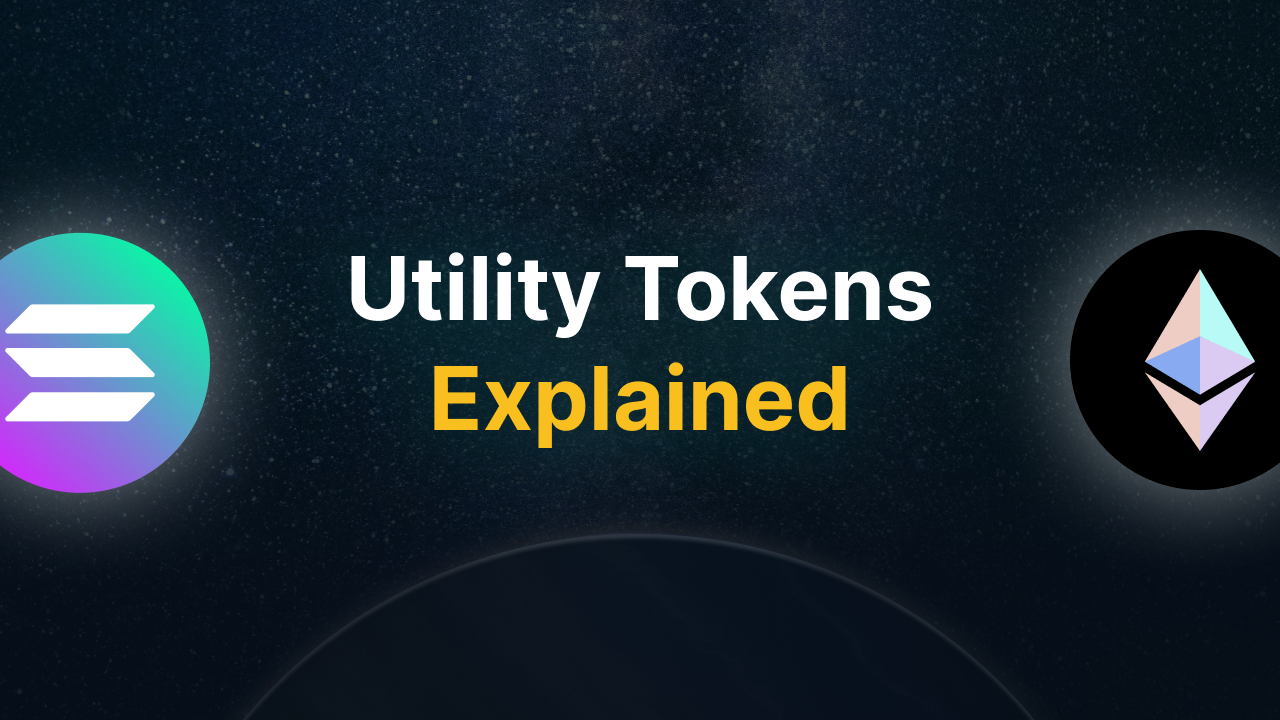Crypto Exit Strategy – When Should You Sell Your Crypto?

Why an Exit Plan?
Most investors have a well-defined plan for buying or investing in crypto, but when it comes to having a selling plan, you'd be surprised how few actually think it through. The following questions are common among crypto investors:
- Should I sell my crypto?
- When should I sell my crypto?
- What is the best time to sell my crypto?
Even experts find these questions difficult to answer, which is why this article will explain how you can best prepare for selling. We'll cover what an exit strategy is, the most common mistakes, and how you can avoid them.
Summary
- Many investors have a clear buying plan, but forget to think about when and how to sell their crypto.
- An exit strategy is a pre-planned selling blueprint designed to take profit or limit loss—especially important in the volatile crypto market.
- Emotional pitfalls like FOMO, loss aversion, anchoring, and overconfidence cause investors to sell too late or not at all.
- Strategies like DCA‑out, Fixed Rate Exit, and Return on Investment Initial (RII) help you sell in a structured and rational way.
- With limit and stop orders, you can take profit automatically or protect yourself from drops—even while you sleep.
What Is a Crypto Exit Strategy?
A crypto exit strategy is a plan created with the intention of liquidating a position in a financial asset (such as crypto). Simply put: it’s a plan for selling your crypto. The purpose of an exit strategy is to limit losses in case of a crash or to lock in profits.
In fact, you should already have a clear exit plan before buying. Especially in the cryptocurrency market, which is highly volatile, having an exit strategy is useful.
One of the most common investment mistakes is not having an exit strategy. Many people wait too long—or never sell at all. Imagine you've doubled your initial investment and are so euphoric that you feel rich. “What if it doubles again? What if…” These are perfectly normal thoughts during a bull run. In such moments, it's smart to have your exit strategy decided in advance.
Why You Need a Crypto Exit Strategy
Lots of people hold onto their crypto for too long (you’ve likely heard of “HODL”), often driven by greed or FOMO (Fear of Missing Out). But that approach can end badly. You could eventually be at a loss—even if you were once well in profit. Selling at a loss? Nobody wants that. So what do you do? You wait for the price to rise again. Unfortunately, sometimes it doesn’t—and your losses just grow over time. That’s why you need a crypto exit strategy.
Example of FOMO
Imagine: you buy a crypto in January. Shortly after, it rises by 25%. Nice, right? You could sell and secure the profit. But then you see your friends holding on. What if it blasts off even further? You don’t want to miss out. So you decide—just like them—to hold on.
Two months later: that same coin is now worth 50% less than what you paid. You’re deep in the red. Now what? Sell at a loss? Or hope it somehow comes back?
Many beginners panic and sell at the worst possible time. And that's a shame, because it could've been avoided with a clear plan: an exit strategy. For example, if you had set a +20% exit rule, you would have locked in your profit.
When Should You Sell Your Crypto?
Sometimes it's time to say goodbye to a coin—and that can happen for various reasons. A common trigger is lack of progress: a project may have started promisingly—with big promises and a spectacular beginning—but then it stalls. No price growth, no updates, no momentum. It’s perfectly reasonable to consider whether your money might be better used elsewhere.
On the other hand, you might simply have made a profit. Maybe you've doubled your investment and want to enjoy it, or you just want to secure what you've earned. It's entirely up to you. There could still be growth potential, but sometimes it’s smarter not to wait for the “absolute peak” and to be satisfied with your gains.
News also plays a major role. Crypto reacts strongly to media coverage. Negative stories (think regulations, hacks, or doubts about the team) can significantly drop prices. That's another reason why a crypto exit strategy is important.
Step-by-Step Plan: How to Build Your Crypto Exit Strategy
There are many different strategies you can use to exit the market. Below, we've listed the most common and well-known methods for you.
Strategy 1: The Step‑by‑Step Method (DCA‑out)
The Step‑by‑Step Method—also known as DCA‑out—is a strategy where you sell at predetermined moments. You choose the frequency. Some people pick specific price targets or certain dates as their selling points.
Example of DCA‑out
Years ago, you started investing in Bitcoin when the price was low (relative to today), around €28,000. Meanwhile, it shoots up to €100,000. You've nearly tripled your initial investment, but you never sold a portion. No one knows where Bitcoin will be in a month, so to assure some profit, you decide to sell a small part. You keep your main position but sell a bit of Bitcoin to lock in gains.
Instead of selling all at once (which can be stressful), you sell gradually at certain price thresholds. You spread out your exit points. That way, you're less likely to panic, avoid being greedy, and consistently secure profits as the price rises.
Say you bought at €28,000. Your selling plan might look like this:
This way, you capture some profit on every major rise. And if the price drops afterward? At least some of your profit is protected. Many savvy investors even send those gains to a separate wallet—like a digital savings jar—to avoid touching them impulsively.
Experienced investors often keep a small portion (e.g. 5–10%) in case the coin skyrockets someday. And if you truly believe in the project, you might choose to hold a portion long-term. Sounds simple? It really is—and that's why it works so well.
Strategy 2: Fixed Rate Exit (FRE)
The Fixed Rate Exit method is a strategy where you determine in advance at which points you will sell your crypto (or part of it). Many investors base this on technical analysis, fundamental analysis, initial investment, market capitalization, and more.
Example Fixed Rate Exit
Suppose you invested in Bitcoin when it was worth €25,000. It has now risen to €120,000 and then entered a long bear market. The Bitcoin price dropped to €50,000 and stayed there. From this point on, you’re in an upward trend again. You've doubled your initial investment, and now you want to plan ahead. You decide to use the current bottom price (€50,000) as your base. You plan to sell part of your holdings at €75,000, €100,000, €150,000, and €250,000. Regardless of what the market does. That’s the Fixed Rate Exit strategy.
So you decide in advance at which points you'll sell. You can base this on instinct, bottom prices, technical indicators, trendlines, or even candlestick patterns. The advantage? You get peace of mind and follow a structured approach to investing.
But what if it keeps rising?
In reality, even people with a plan struggle once prices start trending upward. Everyone wants to sell at the highest possible price (understandably), but how do you know when it has peaked? That question plays tricks with your mind once you see lots of green numbers. This is where the psychological battle begins. You get FOMO, anchoring bias, and become overconfident. You hear your friends talking about their profits and start calculating yourself. “What if my €10,000 turns into €20,000? And what if it doubles again? Then I’ll have €40,000!”
Your brain starts playing dirty tricks on you. That’s exactly why having a predefined sell plan is so important. Pinpointing the exact top is almost impossible, so it’s wise to decide what outcome would make you happy as an investor.
Strategy 3: Return on Initial Investment (RII)
A smart move that many experienced investors make is to recoup their initial investment as soon as possible. This way, you're practically risk-free on that particular trade. You're only playing with profit. Your risk is instantly eliminated.
Example:
You decide to invest €1000 in Ethereum. After a while, your investment rises to €2000. Instead of holding everything in the hope it goes even higher (which often leads to FOMO), you make a wise choice: you sell €1000—your initial stake. This means you’ve pulled your full investment out of crypto and, in theory, can no longer lose—even if everything crashes to zero.
Why does this work?
Many people stay “all-in,” even when they are already in solid profit. The problem? If the market suddenly crashes (which happens often in crypto), you watch your profits vanish—or worse, you end up with less than you started with.
By simply taking back your initial investment when possible, you’re essentially playing with house money. Psychologically, it brings peace. You no longer stress over losses because your original money is already safe.
Strategy 4: Diversification and Profit Reallocation
One of the biggest mistakes beginner investors make is putting all their money into one coin. And let’s be honest: if that coin skyrockets, it feels amazing. But what if the project suddenly collapses—or worse, disappears altogether? Then you’re left with nothing.
That’s why diversification is a commonly used strategy in the investment world. In other words: don’t put all your funds into one project, but spread them across multiple coins, each with different risk and potential. The goal of this strategy isn’t to sell immediately, but to shift part of your profits into lower-risk assets once gains have been made.
There are several ways to diversify your portfolio. Let’s briefly explain the types of crypto coins out there. A balanced portfolio typically includes several types of coins.
1. Mega Caps
The powerhouses Bitcoin and Ethereum are mega caps. These coins have a market capitalization of more than €200 billion. Lower risk, more stability. They’ve been the biggest coins in the market for years and are considered “safer” options. Just remember: crypto is never truly “safe”—investing always involves risk.
You’ll find these two coins in many portfolios. Generally, Bitcoin and Ethereum together make up more than 70% of the total crypto market.
2. Large Caps
Large caps are well-known, large-scale projects with a market capitalization of over €10 billion. Think of coins like Solana, Dogecoin, and Ripple. These projects have been around for years, are well-established, and are unlikely to disappear from the top 100 any time soon.
3. Medium Caps
Medium caps are projects with a market cap of €2 billion or more. These are often well-known in the crypto space, but still have a lot of room for growth. Popular medium caps at the time of writing include: Uniswap, Shiba Inu, and Polkadot.
4. Small Caps
As the name implies, small caps are small. These are coins with “only” about €300 million in market cap. They usually have high growth potential, but are also very risky. Examples include: Neo and MultiversX.
5. Micro Caps
Micro caps are crypto coins that haven’t reached a market cap of €300 million yet. These are often coins with only a few million or even thousands in total value. They’re extremely risky, and you should do extra due diligence before investing in them.
Pro tip:
Invest the majority of your funds in coins you believe will still be around in five years. Think Bitcoin and Ethereum. No one can predict the future, but let’s be real—the odds of them still existing tomorrow are pretty high.
Example Diversification Plan
Below is an example of a diversification plan. Please note that the coins listed are NOT investment advice! They’re simply used to demonstrate what such a plan could look like.
Sell, Reinvest, and Protect Your Profits
Suppose you made a big profit on a specific coin. Now what? Instead of holding out for another doubling, you could sell part and reinvest it into more stable projects (by using the DCA-out strategy or the Stablecoin strategy). Or even just cash out. Sometimes, taking profit is the most rational move you can make.
Strategy 5: Protecting Against Large Corrections
Crypto markets move fast. Sometimes too fast. In just a few minutes, the price of your coin can skyrocket—or crash just as hard. Fortunately, there are ways to protect yourself, automatically, without constantly monitoring. That’s exactly why limit and stop orders exist.
Limit Order
A limit order is, simply put, a pre‑set buy or sell order that only executes if the price reaches a specific level. Suppose you bought Bitcoin at €25,000, but you want to limit your loss if it drops below €20,000. You can place a sell-limit order at €20,000. Once Bitcoin touches that price, your exchange automatically sells—even if you’re asleep.
What does this mean in practice? You can cap your losses in advance without watching the market continuously. And the opposite works too: you can set a limit order to lock in profit at a particular price. For example, you buy Ethereum at €2,000 and decide to sell part at €2,500. Once that level is hit, your exchange automatically sells for you.
Stop Loss
There are also stop orders—better known as stop-loss. These work a little differently. A stop order acts like an alarm: once the price reaches a certain level, your order is triggered. Based on your setup, it executes either a market order or a limit order. This is handy when you don't want to sell now, but do want to sell if the price falls below a certain point. You don’t have to stay awake worrying—it’s your safety net.
Stop and limit orders are ideal for investors who want to manage their crypto in a strategic way. You don’t need to decide in the moment, and emotions are left out of the process. Whether you’re on holiday, asleep, or simply not focused on crypto, your exit plan proceeds automatically.
A small caveat:
In very fast market movements (such as during a crash), there’s a small chance a limit order may not fill completely—or might not fill at all. Especially for smaller coins with low liquidity. Despite that risk, using limit and stop orders remains a smart way to add structure to your investments.
Strategy 6: Selling and Converting to Stablecoins
Active crypto investors have likely heard of stablecoins. These are coins that maintain a fixed value—often pegged to fiat currencies like the dollar or euro. So, they track the euro or dollar price.
If you’re concerned about a crash, or want to cash out some profits without converting directly to euros, stablecoins offer a useful option. Common choices include EURC and USDT. Most exchanges offer one or both. These coins don’t significantly fluctuate—unless the underlying euro or dollar price moves. Think of them as a crypto version of fiat.
Stablecoin Strategy Example
Suppose you made €5,000 profit on your Bitcoin purchase. You want to sell, but also keep funds available in case the market dips—and you want to buy again during the dip. So, you convert that €5,000 to EURC, locking in your gains. If the market keeps rising—you still hold your €5,000 profit. If it drops—you’re ready to reinvest.
The Psychology Behind a Crypto Exit Strategy
All of the above is meant to introduce various exit strategies you can use. As you’ve likely realized: there’s no perfect strategy. No one can predict the future. But why does psychology play such a key role in this? It's simple: humans are emotional beings and often act on feelings. Below is a brief overview of psychological traps investors commonly face.
1. Loss Aversion
The pain of loss often outweighs the joy of gain. This is one of the most powerful biases in investing. Even when you're in profit, you hesitate to sell because it might rise further. And if you're in loss, you avoid selling because you don’t want to realize the loss. Result? You hold too long—and often lose more.
Example of Loss Aversion
You bought Ethereum at €2,000. It rose to €3,500, but you waited. Then it dropped to €2,200. You think: “I'll wait until it returns to €3,500 before selling.” You cling to the former peak instead of realizing a potential loss. The price continues falling, and you remain stuck. Selling at a loss doesn’t feel good—so you do nothing, hoping it eventually recovers.
2. Fear of Missing Out (FOMO)
Arguably the most famous. FOMO emerges when the market surges and everyone starts talking about crypto. You hear stories of huge profits, influencers claim it's just the beginning—and you worry: “What if I sell too early?” So you hold on. Or worse: you buy more at the peak.
Example of FOMO
You planned to exit Bitcoin at €100,000. But as that price nears, Twitter buzzes about €250,000. You think: "Maybe I'll wait…" You push your goal higher. But €250,000 never appears—and you later regret: “I should’ve sold earlier…”
3. Anchoring Bias
You base decisions on a fixed number in your head—often without real justification. It could be the amount you paid, a prior high, a round number (“I’ll sell at €100,000”) or something a YouTuber predicted. Even as the market changes, you stay anchored to that number.
Example of Anchoring Bias
You once heard Cardano might reach €100. That number sticks in your mind. Even if the price reaches €10, you're unsatisfied because your anchor is €100. You wait—and wait... until the price collapses to €0.50. Goodbye gains, goodbye dream.
4. Overconfidence
Many investors believe—especially after a few successful trades—that they can time the market. They think they’re smart enough to sell at the absolute peak. And as that peak seems to approach, they think: “It could still go higher.” So they hold... just a little too long.
Example of Overconfidence
You're already up 300%, but think: “I’ll only sell at 500%.” You may be right—but you're risking everything if the market crashes (like in 2021). In that scenario, you could end up with nothing—not because you didn't earn, but because you thought you were smarter than the market. Especially with altcoins, many never return to their previous all‑time highs. Be wary of that.
5. Recency Bias
What has just happened feels logical. If something has risen for months, you assume it will continue. You forget sentiment can shift overnight. And if it just dropped sharply, you expect the worst—even if conditions have changed.
Example of Recency Bias
You bought Solana at €20, and it soared to €100 within months. You think: “What if it hits €200?” You get used to that pace and treat it as the new norm. Then it falls to €60, and it feels catastrophic—even though you're still ahead.
6. Status Quo Bias
Sometimes you want to sell, but you delay. Selling implies action—and that can feel risky. What if it's the wrong choice? What if it keeps rising? So you do nothing. That “nothing” seems safe—until it's too late.
Example of Status Quo Bias
You had a selling goal at €80,000 but decide to “wait a bit.” You have doubts for weeks, but the price keeps rising... so you sleep on it another night. You're afraid of making the wrong move. The next day, it drops 20%. You think: “No stress, I'll wait for a rebound.” But the rebound never comes. The price keeps falling for months, and your potential profit disappears.
All these psychological traps have one thing in common: they pull you away from your plan. They make you doubt, change course, gamble or freeze. That’s exactly why having a predetermined exit strategy is so critical. Not because it's perfect, but because you set it in a moment of clarity—before emotions take over.
Your biggest enemy in investing? Often yourself. With a solid plan, you don’t need to fight internal battles. You simply follow the script you wrote earlier—clear-minded, stress-free, and profitable.
Conclusion
When it comes to investing in crypto, most people have a plan to enter—but few have a plan to exit. That’s understandable: selling is often harder than buying. You don’t want to miss out on gains, you’re afraid of selling too soon, or you secretly hope for one more doubling—and before you know it, your gains evaporate right in front of you.
A good exit strategy helps you avoid these pitfalls. You know in advance what you’ll do if the price rises—or falls. You can take profits step by step, protect your initial investment, sell at fixed levels, or rebalance your portfolio. You can even sell automatically with limit or stop orders or temporarily move into stablecoins when the market is volatile.
Which strategy is right for you depends on your goal, risk profile, and belief in the project. But whatever you decide: do it consciously. Don’t let FOMO, greed, or fear dictate your moves. Don’t trade based on what your neighbor, Twitter, or an influencer says. Trade based on a plan you created during a moment of clarity.
Remember: in crypto, your emotions are your greatest enemy. A predefined exit strategy is your safe harbor. It prevents panic selling—or staying in too long out of pure greed.
So don’t ask yourself: “What if I sell too early?” Instead ask: “What if I never sell?” A good plan protects your money, preserves your gains, and preserves your peace of mind... and that might be the best investment you can make.




